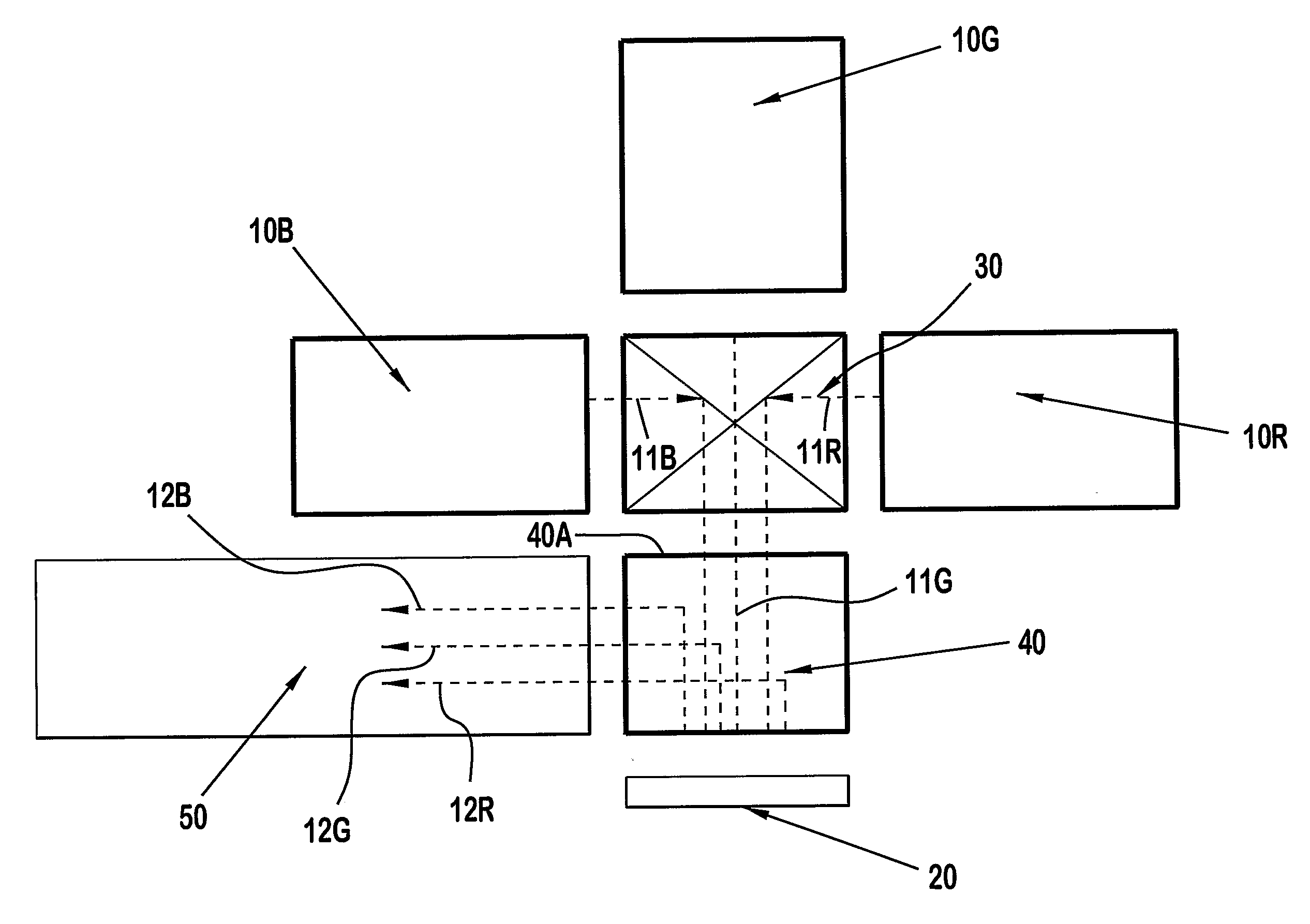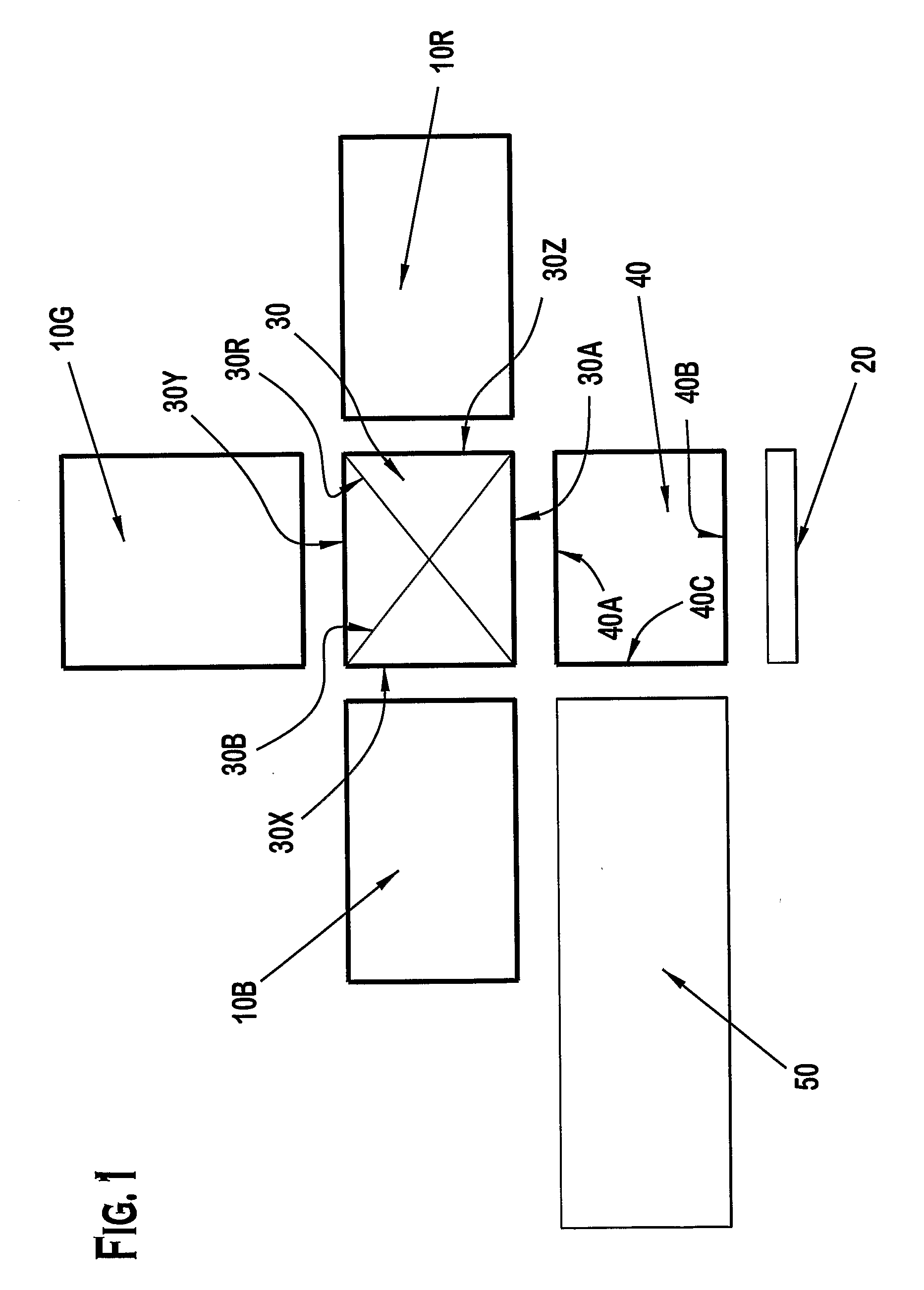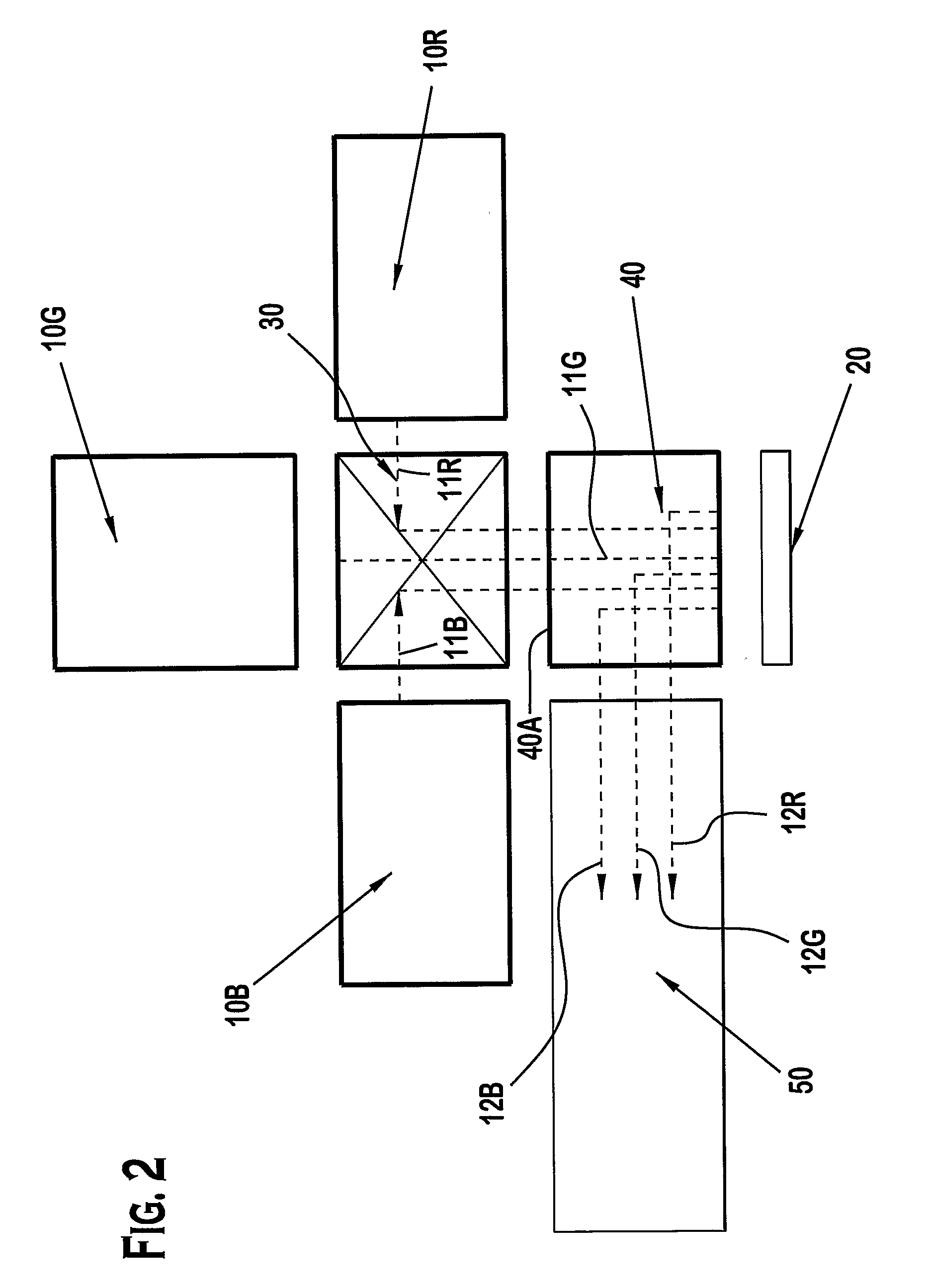Discrete High Switching Rate Illumination Geometry For Single Imager Microdisplay
- Summary
- Abstract
- Description
- Claims
- Application Information
AI Technical Summary
Benefits of technology
Problems solved by technology
Method used
Image
Examples
Embodiment Construction
[0009]FIGS. 1 and 2 show a projection system according to an exemplary embodiment of the invention. Three monochromatic light sources 10B, 10G, and 10R emit monochromatic light beams 11B, 11G, 11R in the blue, green and red color spectrums, respectively. In the illustrated example, the monochromatic light sources 10B, 10G, 10R are Resonant Microcavity Architecture (RMA) devices. The monochromatic light sources 10B, 10G, 10R are sequentially switched on, such that at any point in time, only one of the three monochromatic light sources is switched on. Thus, while FIG. 2 shows all three monochromatic light beams 11B, 11G, 11R for convenience, no more than one of the three light beams will be generated at any particular time. The monochromatic light sources 10B, 10G, 10R have a high switching rate such that they can each be cycled on during a single refresh cycle for a display employing the exemplary projection system. For example, an exemplary liquid crystal display television or DLP d...
PUM
 Login to View More
Login to View More Abstract
Description
Claims
Application Information
 Login to View More
Login to View More - R&D
- Intellectual Property
- Life Sciences
- Materials
- Tech Scout
- Unparalleled Data Quality
- Higher Quality Content
- 60% Fewer Hallucinations
Browse by: Latest US Patents, China's latest patents, Technical Efficacy Thesaurus, Application Domain, Technology Topic, Popular Technical Reports.
© 2025 PatSnap. All rights reserved.Legal|Privacy policy|Modern Slavery Act Transparency Statement|Sitemap|About US| Contact US: help@patsnap.com



